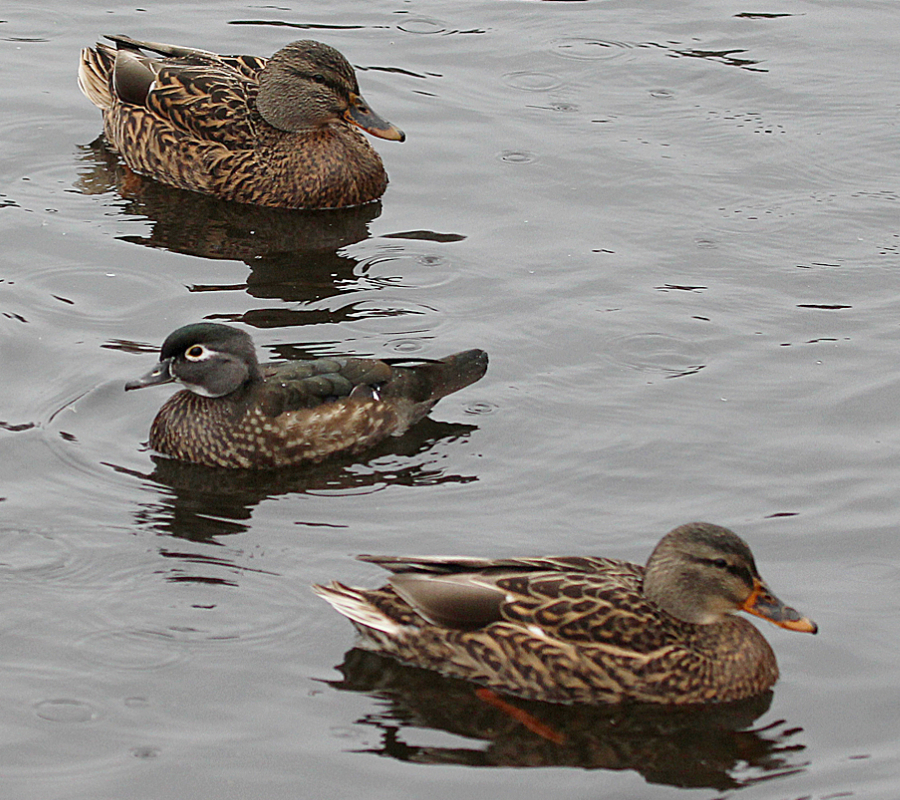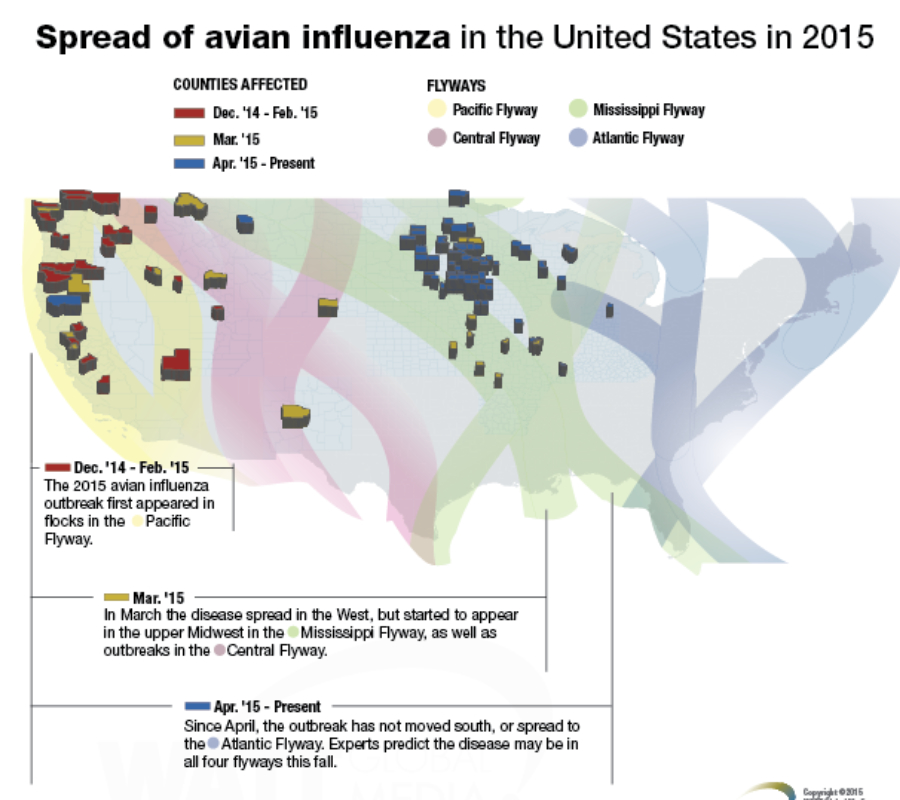A case of H5N2 avian influenza (HPAI) was detected in a wild mallard duck in Alaska and people are urged to take precautions. Last year, the virus affected more than 50 million birds in 15 different states.
The new case is an alert for a possible wave that could extend in the U.S. because infected birds shed the disease onto farms and other places where food is produced, risking the market and current prices. The United States Department of Agriculture’s (USDA) Animal and Plant Health Inspection Service (APHIS) confirmed Friday the presence of a highly pathogenic H5N2 avian influenza near Fairbanks, Alaska. The carrier is a wild mallard duck from a state wildlife refuge in the region.

The virus had not been spotted since June 2015, and the USDA was able to identify it thanks to an ongoing wild bird surveillance. Approximately 45,500 samples have been collected during the monitoring since July 1 2015-June 30, 2016. The wild mallard duck was captured as part of the July 1, 2016-July 1, 2017 wild bird surveillance.
Its sample was positive for avian influenza, and the prevention protocol was quickly set into motion. The United States has the strongest avian influenza surveillance program in the world, says the USDA press release.
Avian influenza is an infection which affects poultry, such as chickens, turkeys, pheasants, quail, domestic ducks, geese and guinea fowl. The virus is only carried by free-flying waterfowl, including ducks, geese, and shorebirds.

To prevent the spreading of the disease, the USDA urges anyone involved with poultry production -from small establishments to large commercial producers- to review their biosecurity activities to guarantee the health of their birds and the health of their products.
People must be alert because birds could have the virus and may not appear sick. Individuals should avoid direct contact with wild and domestic birds using gloves, and if there is direct contact, hands must be washed with soap and water. A person must change their clothes after any interaction with poultry.
Owners must avoid contact between their domestic birds and wild birds and report any death or sickness in this kind of animals. People can report possible cases of avian influenza through their state veterinarian or the USDA’s toll-free number at 1-866-536-7593. If a case is found on a farm or any other location, neighboring flocks must be euthanized to prevent the spread of the disease.
Avian influenza affected 15 U.S. states last year
Investigations regarding 2015 H5N2 cases in the U.S suspected that the first cases were also found in Alaska. Scientists believe that a Eurasian strain of the virus began to mix with American versions to create a deadly H5N2 variant. Researchers suggested that the lack of biosecurity measures and cleaning practices were the cause behind the massive wave that affected 15 states from Washington to Indiana.
The virus is not only a danger to birds but to their products, and if they are infected with avian influenza, they cannot be sold and prices go up. The 2015 outbreak provoked the ban of dozens of exports on the U.S. poultry and egg products. When there are fewer products to sell, the demand increases and prices are raised.

The Wall Street Journal reports that earlier this year, a different highly infectious flu virus affected a turkey flock in Indiana and another less harmful version was identified in Missouri.
Source: U.S. Department of Agriculture

The first sentence of the article reads, “A case of H5N2 avian influenza (HPAI) was detected in a wild mallard duck in Alaska and people are urged to take precautions.” Precautions for what? Let me look here a second. I don’t appear to be growing any feathers. I have a solution. Just kill every single bird in Alaska. There problem solved.